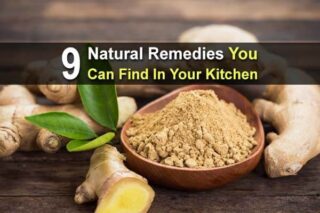Estimated reading time: 16 minutes
Some of us are quite familiar with black walnuts and the idea of a black walnut tincture used as a medicine may come as a bit of a surprise. If you’ve ever handled black walnuts you know the problem. They will stain your skin, clothing, shoes and everything else they come in contact with.
The stains range from yellow to black and seem impossible to remove. It’s the kind of thing that makes you wonder why anyone would think of this as medicine? They’re good to eat (but still make a mess) but medicine might be a new concept for some of us.
Want to save this post for later? Click Here to Pin It On Pinterest!
A Brief History of Black Walnut Medicine
Like so many traditional and herbal remedies, black walnuts have been used by ancient cultures for centuries to treat conditions from bacterial infections to diarrhea to fungal infections. And the list goes on and on.
What makes the compounds in black walnuts unique is a combination of tannins and juglone that have medicinal properties. There are also traces of iodine and we’ll get into more of that later. The trick is to extract those compounds and use them safely and effectively. That’s what a tincture is all about.
Tincture 101
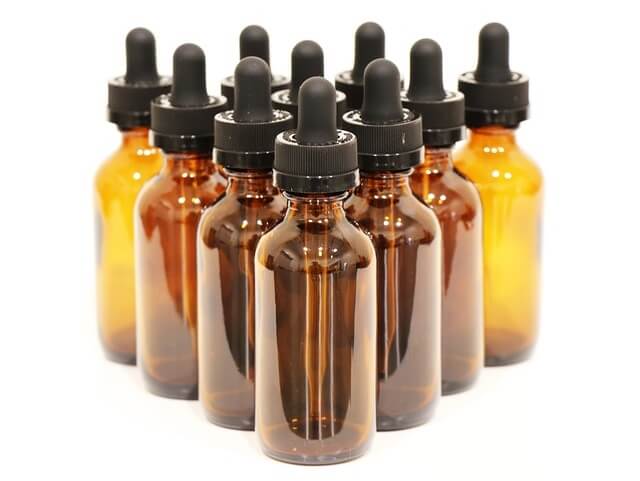
A tincture is a concentration of something usually in alcohol or vinegar. The alcohol or vinegar extracts key compounds when something is soaked in it for weeks up to months. There’s no shortage of tinctures from many different things, but the process is similar.
A tincture usually recommends vodka at 80% alcohol, apple cider vinegar at a concentration of 5% acetic acid, white vinegar at the same 5% acetic acid concentration, or food-grade glycerin.
All of these liquids will draw out the chemical compounds you want for a tincture, but some work better than others.
Vodka is the most effective but some people feel uneasy about giving a medicine to someone made from vodka, especially to children. The tincture is actually very highly diluted usually with an eye-dropper full in a glass of water or juice.
Regardless, some people don’t like the idea of giving vodka in any dilution to children or the elderly. Generally, a black walnut tincture made from vodka will have a shelf-life of 2 to 3 years if stored properly.
Apple cider vinegar is commonly referred to as the second most effective solution for a tincture. Better yet, you can make your own apple cider vinegar if you have any access to apples. Shelf-life if stored properly is about a year.
Food-grade glycerin is also listed as an effective solution for a tincture, although it doesn’t extract quite as much of the essential compounds as vodka or apple cider vinegar. The shelf-life also runs at about a year if stored properly.
White vinegar is also used for tinctures, but many herbalists seem to think the apple cider vinegar works better. Shelf life is one-year.
We’re going to do a test with all 4 solutions: vodka, apple cider vinegar, food-grade glycerin, and white vinegar, and see if we can assess any differences.
Who Needs a Black Walnut Tincture?
The whole reason for making a black walnut tincture is as an herbal remedy for a range of conditions.
Some of these are historical and based on anecdotal evidence for the treatment of various conditions like the intestinal worms pictured above. Others are based on clinical studies that substantiate the use of black walnut tinctures as an effective treatment for medical conditions.
Here are the substantiated uses that have been proven effective:
- When applied as drops to a bacterial infection on the skin, a fungal infection on the skin (athlete’s foot, toe-nail fungus, ringworm, yeast infections), and other topical infections caused by cuts, scrapes, burns or wounds.
- When ingested in water or tea with a dropperful to 8-ounces to treat diarrhea, constipation, parasitic worms, candida, intestinal infections, and nausea.
- As a gargle for sore throats, restore tooth enamel, heal cavities and relieve tooth pain.
- As a treatment for acne, eczema, psoriasis, warts, cold sores and herpes.
Here are links to some of the clinical studies to support those claims:
- Walnut By-Products— Sustainable Alternatives for Human and Plant Health
- A Plant-Derived Hydrolysable Tannin Inhibits CFTR Chloride Channel: A Potential Treatment of Diarrhea
- Production and Application of Tannin Acyl Hydrolase: State of the Art
There is also anecdotal evidence that indicates black walnut tincture can be used for:
- Treatment for hyperthyroidism and other thyroid conditions
- Radiation sickness (due to the high concentrations of iodine in black walnuts).
- Anti-cancer properties
There are reports of clinical studies in the works to determine if these conditions are effectively treated by black walnut tincture, but none have been completed as yet.
Cautions and Side-Effects of Black Walnut Tincture
The big caution is the obvious one: If someone is allergic to nuts, they should not take a tincture made from black walnuts. There are also cautions about people whose immune systems are compromised, and the usual cautions about treating children with herbal cures in unknown or arbitrary concentrations. Also, black walnut extracts should no be used during pregnancy or breast-feeding.
The standard recommendation for many people is to try less at first and see how someone responds. Homemade herbal cures are rarely tested for concentration or contaminants. The telegram is to take a little before you take a lot and monitor for side effects.
Anyone taking prescription medicines should understand the interactions that black walnut tincture may have. Hopefully your doctor knows the answer.
One other caution is excessive use on the skin. Black walnut tincture will stain your skin for days if not weeks. Once the condition has cleared up, stop using it. Even bleach struggles to clean off a black walnut stain.
Harvesting Black Walnuts
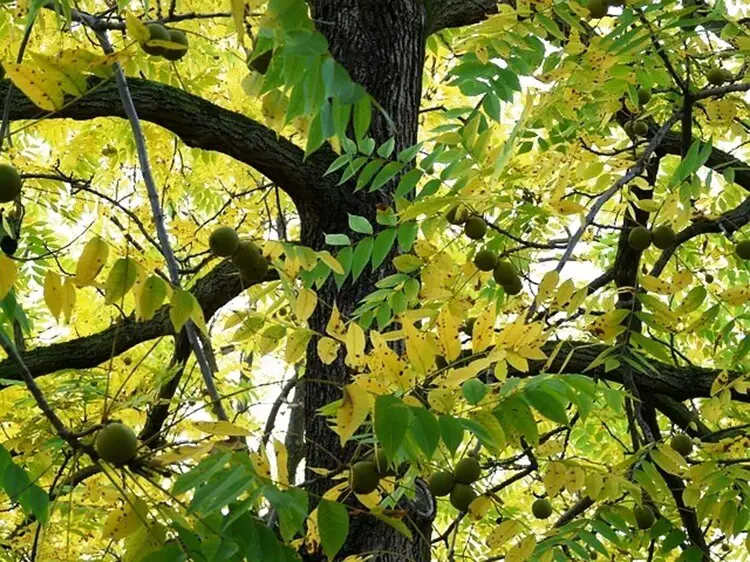
This is not hard. You’re looking for the black walnuts on the ground. Black Walnut trees can get up to 80 feet high so climbing into a black walnut tree is a bit ambitious.
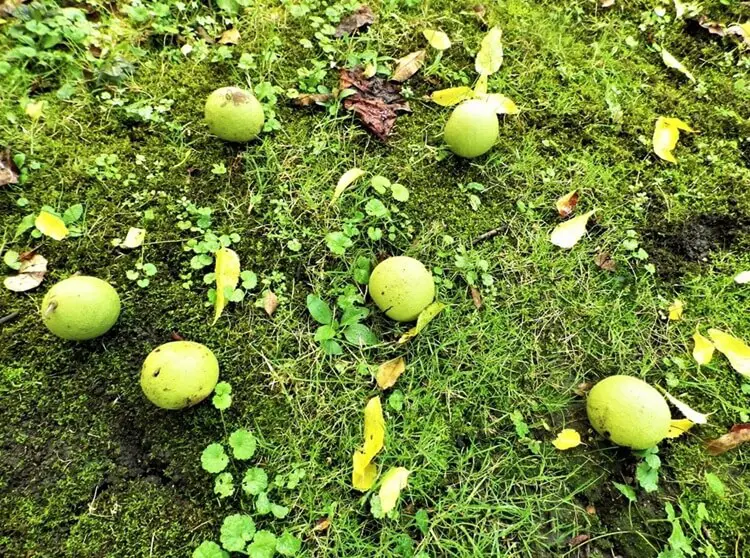
Look for the bright green walnuts on the ground. Some may be a bit blackened but the green ones are best. A 5-gallon bucket is all you need, but wear old clothes and shoes. Just stepping on them can leave stains.
And don’t forget gloves. It can take weeks to get the stains off your hands.
The good news here is that the outer skin surrounding the nut is the primary parts and pieces we need to harvest. That means cutting off the green, outer skin either with a knife or shears.
This is when you really want to wear gloves. The outer green skins quickly turn black (particularly the inside) and will stain your hands. It also makes sense to wear old clothes (paint clothes) because any chips or bits that hit your shirt or pants will get stained as well.
Prepping the Walnuts for the Tincture
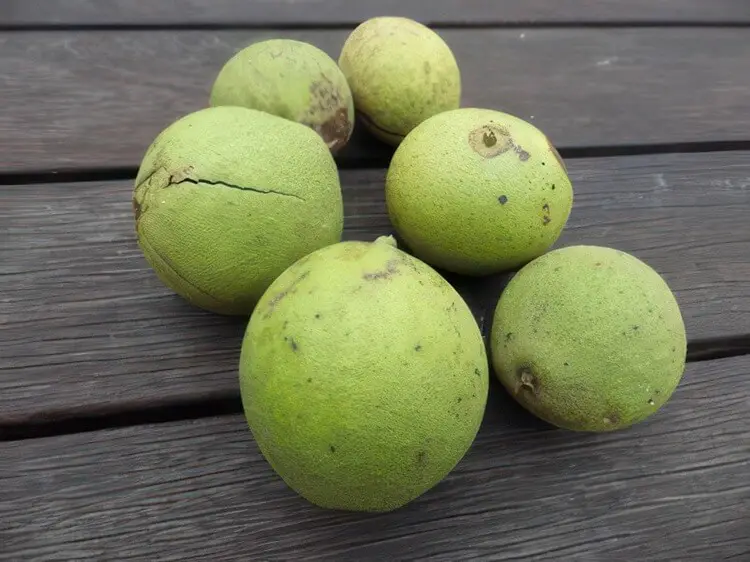
Before cutting and peeling the green skins, fill a 1-quart mason jar with vodka. We’re also going to fill 3 additional jars with apple cider vinegar, food-grade glycerin, and white vinegar to see which works best.
We’re also going to try using whole, green, black walnuts and another recipe using the shelled inner nut with the pulp still attached. They will be jet black.
We’ll eventually line the jars up and try to drop the bits of the outer hull into the first jar as soon as you cut the shell. The skins turn black in seconds and you might be able to get some walnut skins into the jars before that happens. That’s not critical, but it’s worth doing when hulling the black walnuts.
We’re also going to try dropping the whole green walnuts into the jars filled with apple cider vinegar, and drop the shelled inner nuts (the very black ones) into another jar with the white vinegar.
We’re doing this in different ways because a lot of the advice out there recommends all of these approaches. Here again, we’re trying to determine what might work best -and maybe the easiest as well.
4 Approaches to Making Black Walnut Tincture

We tried this 4 ways with different solutions and black walnuts prepared 3 ways. The 4 solutions were alcohol (vodka), apple cider vinegar, food-grade glycerin, and white vinegar.
The 3 ways included cutting off the green outer coating, using the whole, green, black walnut and only using the dark, black inner walnut.
Here are the recipes for each and then we’ll identify our general results.
Alcohol Based
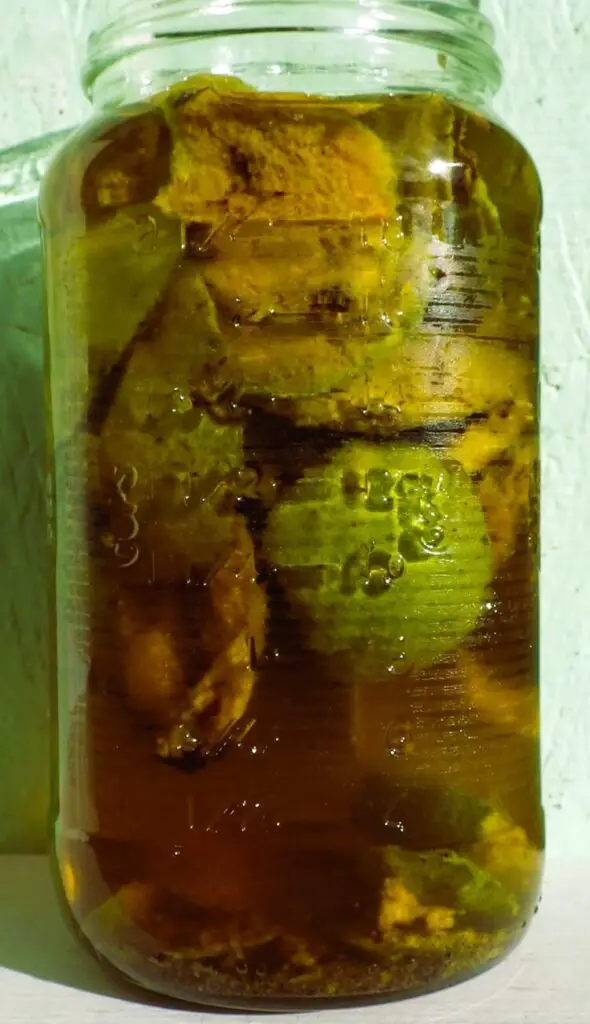
- Fill the mason jar ½ full with vodka.
- Drop pieces of the black walnut skins into the jar. Try to do this as soon as you cut off each piece.
- If the jar is full of pieces above the level of vodka, add more vodka.
- Seal the jar and let sit in a dark place out of the sun.
- Shake the jar once a day.
- After 4 weeks, strain the tincture through a sieve lined with a coffee filter
- Bottle the tincture in an eye dropper bottle.
- Shelf-life should be good for 3 years.
Apple Cider Vinegar Based
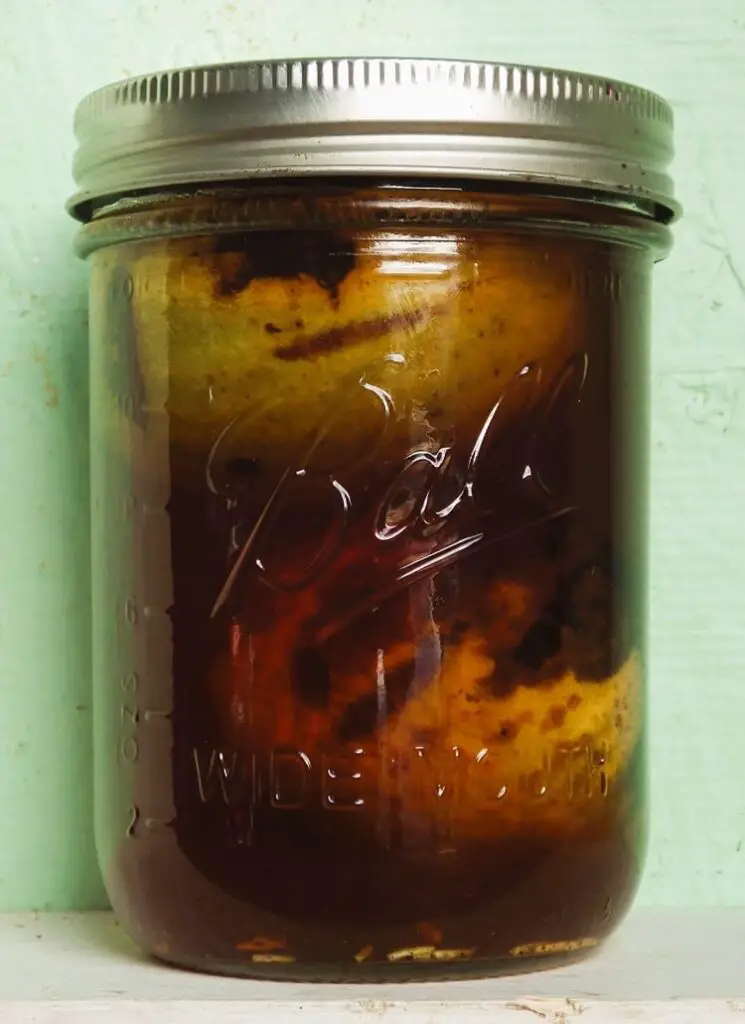
- Fill the mason jar ½ full with apple cider vinegar.
- Drop whole, green, black walnuts into the jar.
- Top off the jar with more apple cider vinegar until the walnuts are covered.
- Seal the jar and store in a dark place out of the sun.
- Shake the jar once a day.
- After 4 weeks, strain the tincture through the sieve lined with a coffee filter.
- Bottle the tincture in an eye dropper bottle.
- Shelf-life should be good for 1 year.
Food-Grade Glycerin Based

- Fill a mason jar halfway with the food-grade glycerin.
- Add whole, green, black walnuts. The greener the better but some black spots on the outside are okay.
- Tightly cap the jar and let rest in a dark place out the sunlight.
- Shake once a day or anytime you walk by the jar.
- After 4 weeks you should be done, but glycerin could take up to 8 weeks because it is not as astringent as alcohol or vinegar.
- Filter the tincture through a sieve lined with coffee filters.
- Bottle in dropper bottles.
- Shelf-life is estimated to be 1-year.
White Vinegar Based
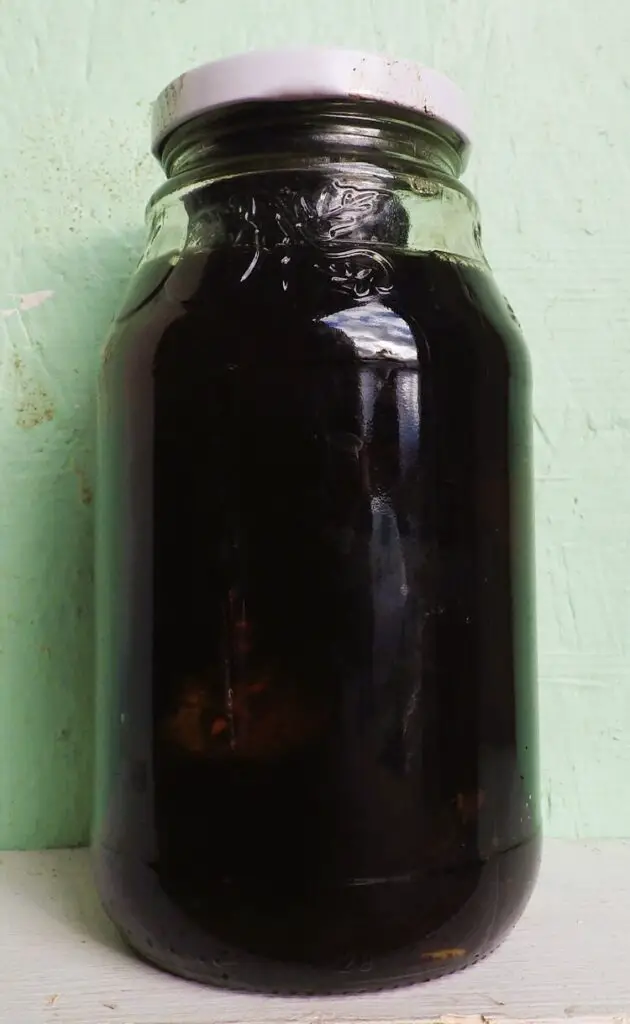
- Fill the mason jar ½ full with white vinegar.
- Drop the shelled inside-walnuts into the jar.
- The walnuts will be a dark black.
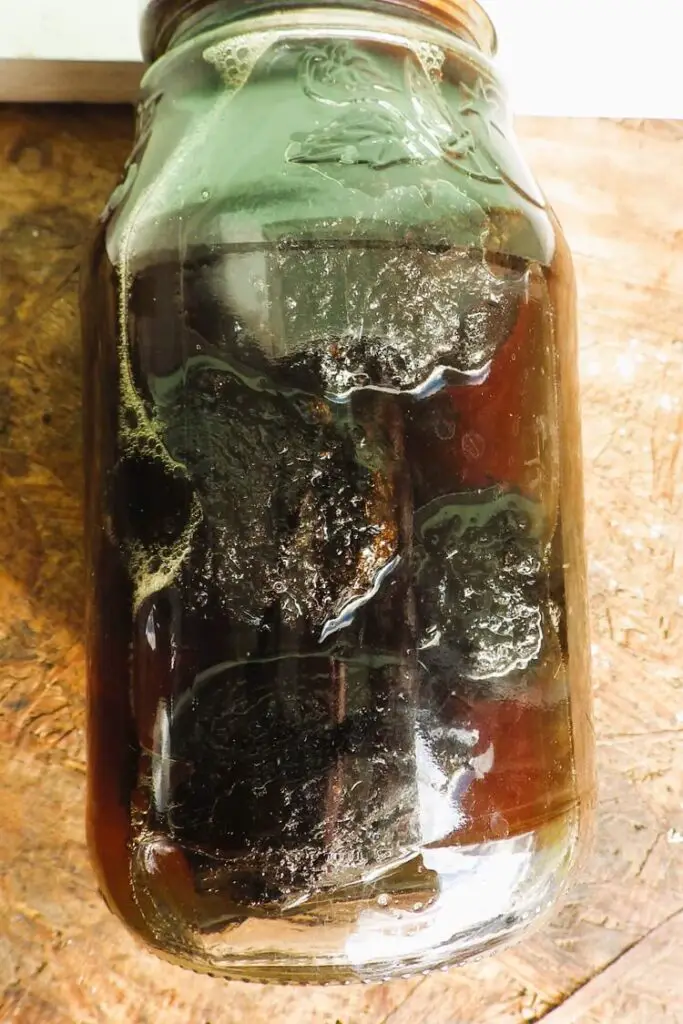
- Top off with more white vinegar.
- Store in a dark place and shake daily.
- After 4 weeks, strain the tincture through a sieve lined with a coffee filter. You may have to change out to a new coffee filter if the first one gets clogged up.
- Bottle the tincture in an eye dropper bottle.
- Shelf-life should also be good for 1 year.
Which Approach Worked Best?

We couldn’t do lab tests on the tinctures, but based on color and the level of extraction, it seems that pieces of green, black walnut skins in vodka and the inner black nut of the walnuts in white vinegar created the most intensity and depth for a tincture.
There are other variables like putting the inner black nuts in vodka that we didn’t do, but we at least wanted to try the 4 main solutions that seem to show up in recipes for black walnut tincture.
If you’re okay with a vodka-based tincture, that appears to produce the best results. The whole, inner black nuts in white vinegar also seemed to work well if you want a tincture that is not alcohol based.
Another fact that could support the efficacy of black walnut tincture made from alcohol or white vinegar is that they possess antiseptic properties to begin with. Alcohol is a standard prep for cuts, wounds and injections and vinegar is known for its antibacterial properties for canning and pickling foods.
And Don’t Forget…
As a side note, remember to name and date any black walnut tincture you make. We always like to think we’ll remember that kind of stuff, but some of us never do.
And on a messy note, make sure your lids are on tight before doing your daily shake. Spilling this stuff all over the place can result in the biggest mess you’ve cleaned up in a long time.
Using Black Walnut Tincture
There are essentially two ways to use black walnut tincture: Applied topically or ingested in a mix of water, tea, or juice. The usual dosage for either use is one to two droppers full two to three times a day.
A standard caution is that you should always monitor any side-effects on the skin or any intestinal distress or stomach upset after ingesting. Side effects can range from skin irritation to nausea.
If that occurs you may be allergic to some of the ingredients or for other reasons. Stop applying it or drinking it if that happens.
Applied Topically
There are a few ways to apply black walnut oil to the skin. They either call for a dilution in water or an oil or cream or used straight from the eye dropper.
Here are some of the standard recommendations:
- Whip the black walnut tincture into an oil or salve like Vaseline using a wire whisk or a fork. Blend until smooth and the color is consistent throughout. Apply to the affected area twice a day – once in the morning and once at night. Keep an eye on things to see if any redness or swelling results, and if so – stop using it. Most people report positive results.
- Dilute a few drops in a few drops of warm water. You want about a 50/50 mix. Dab a small area on your skin to test for any reactions. If all is well, apply to the affected area. Repeat 2 or 3 times a day.
- Use an eye dropper to apply the black walnut tincture directly to things like warts or fungal infections. It can also be used as a treatment for toenail fungus and athlete’s foot. It will stain our skin like all of the other approaches but more-so when applied directly from an eye dropper.
Ingested in Water, Tea or Juice
There have been some suggestions that a black walnut tincture is a gentler way to kill and purge parasites from the intestinal tract than pharmaceutical dewormers. Then again, play it safe. Do not ingest black walnut tincture for more than 2 weeks at a time maximum. It can be hard on the system.
The standard dosage is usually 15 to 20 drops in water or tea or juice 2 to 3 times a day. You should also add it to a juice like grape juice or apple juice. Try to avoid acidic juices like orange juice, tomato juice and lemon juice. You don’t want too many things going on at once by adding citric acid to a bunch of tannins, juglone and iodine.
If you are taking prescription medicines and not sure about side-effects or interactions -ask your doctor. He or she will probably say: “Black Walnut what?!”
You never know. There are also some good books and articles about herbal remedies that cover some of this information:
- THE HERBAL REMEDIES & NATURAL MEDICINE BIBLE
- Dr. Barbara O’Neill Herbal Remedies & Natural Medicine Encyclopedia
- Black Walnut Tincture – How to Make it and Use it Safely
The Iodine Surprise
Iodine is hard to find in nature. Much of it is derived from the oceans through seafood like shrimp and lobster or mineral salts in the ground. Black Walnuts are one of the few plant-based sources of iodine. It’s only there in trace amounts, but it seems to add to the antiseptic and antibiotic properties of black walnut tincture.
The presence of iodine has even led some to assume it can be used topically and be absorbed into the bloodstream through the skin as a defense against radiation sickness. No clinical studies have supported this claim but there is anecdotal evidence from some survivors of the Chernobyl disaster. You can take that with a grain of salt – or iodine.
Don’t Toss the Walnuts
After you have your tincture on the shelf and distilling, you probably are going to have a lot of walnuts leftover. If you want, you can eat them. Here are links to articles about how to process black walnuts for eating.
- 10 Wild Nuts You Can Forage
- Black Walnuts: Harvesting, Cracking and Uses – Forager | Chef
- How to Harvest Black Walnuts
One thing you’ll always hear is that black walnuts are a tough nut to crack. A vise may be your best bet because you can apply slow, steady pressure until the nut cracks slightly. You can then use a flathead screwdriver to pry the nut open.
An alternative is a hammer, but that usually shatters them into too many pieces. Try the vise first and forget about traditional nut crackers. Most of them just won’t crack a black walnut.
As Always – Be Careful Out There
The biggest challenge with any natural or herbal remedy is understanding dosage. When we make it ourselves, we can’t always be sure of the concentration of any active ingredients. That’s why you should take the time to learn a bit more about it, consult with your doctor if taking medication or are unsure, and to take a little at a time to assess affects and side-effects.
Like so many natural remedies, black walnut tincture has been used for centuries with a fairly good history. You just don’t want to make assumptions, so do some due diligence, so you get it right the first time.
Like this post? Don't Forget to Pin It On Pinterest!
You May Also Like:









